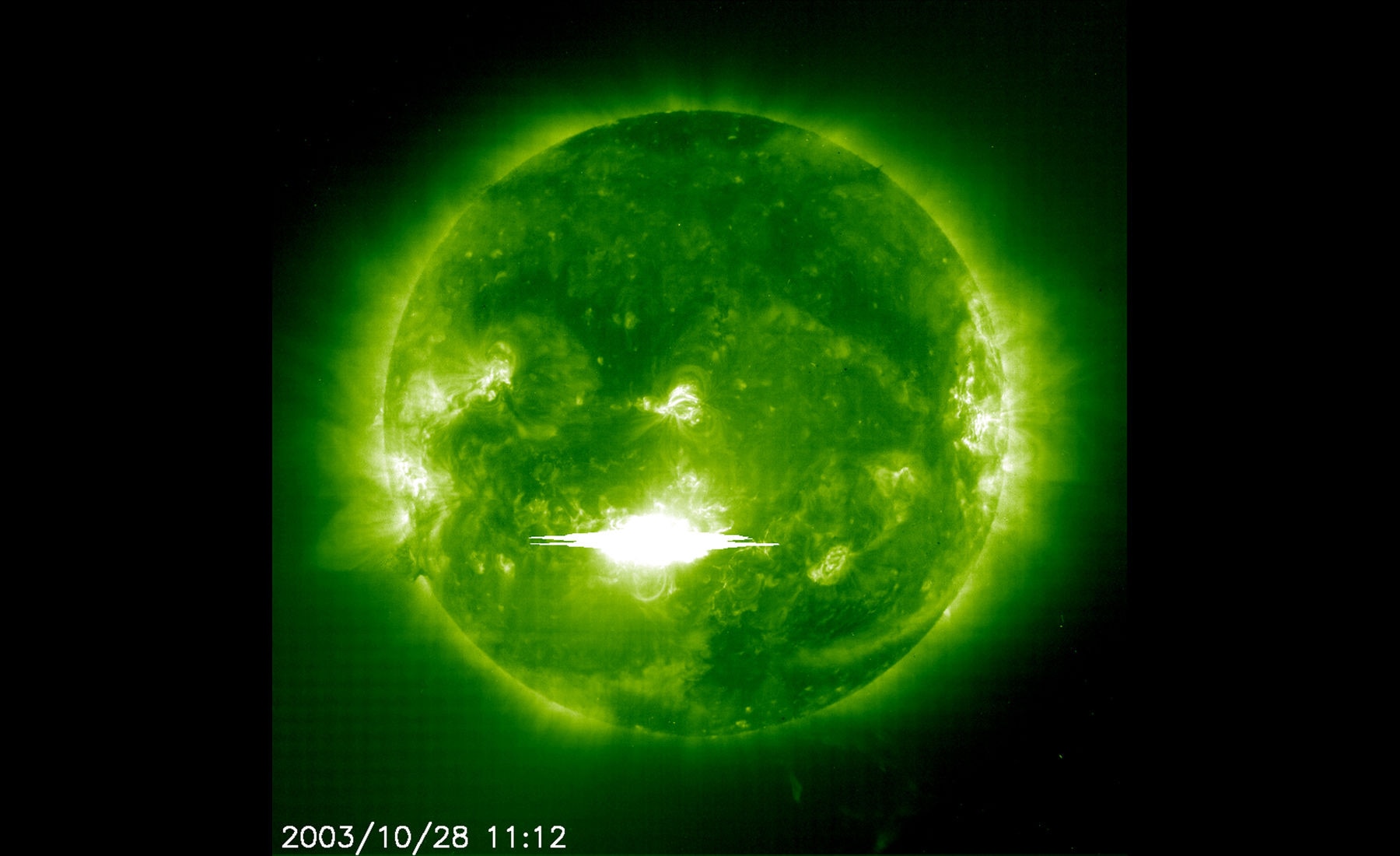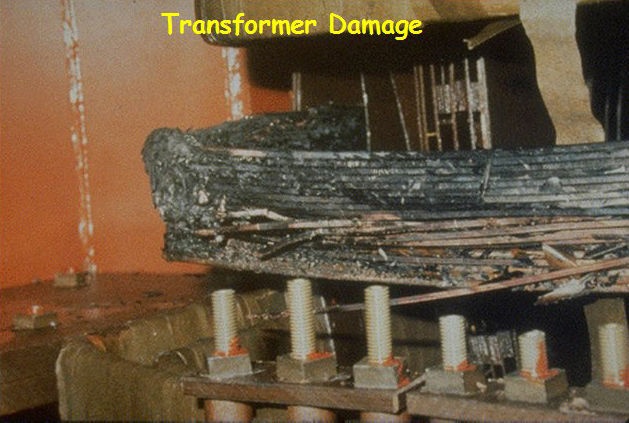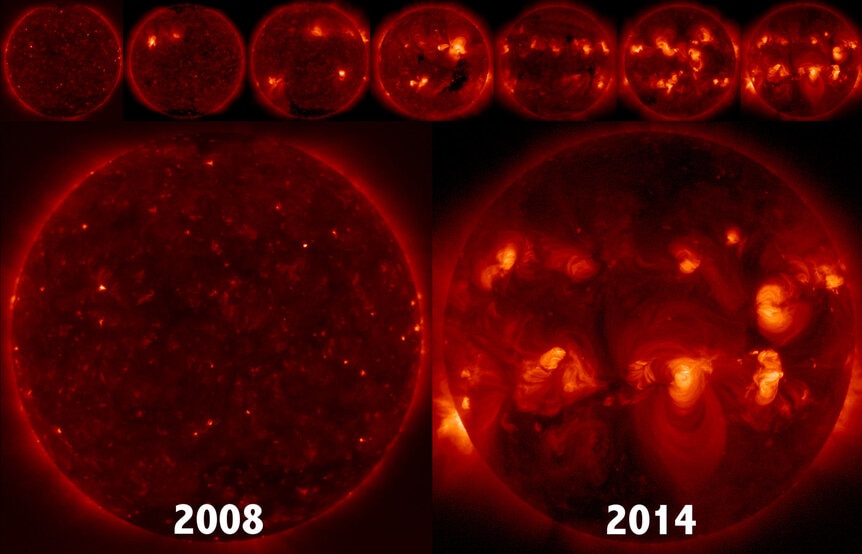Create a free profile to get unlimited access to exclusive videos, sweepstakes, and more!
How often do severe solar storms pummel the Earth?

Every now and again, the Sun gets testy.
Huge storms erupt from its surface, some (called solar flares) firing out intense radiation across the electromagnetic spectrum, some (called coronal mass ejections) blasting out billions of tons of subatomic particles that sleet across the solar system at incredible speeds. If these storms hit Earth, they can create havoc. At best there can be minor radio interference and, perhaps, the glory of an aurora.
At worst, they can destroy orbiting satellites and cause widespread blackouts that can take months, even years, to recover from. That takes an extraordinarily powerful event, and we haven't experienced one of these megastorms since the electronic era on Earth began. But were one to happen now, and Earth faced its full brunt, the damage it caused could be global and catastrophic.
Every now and again, the Sun gets testy. But how often?
As you can see, this isn't an academic question. The economics of it are important. It could cost many trillions of dollars to clean up after a big event, and while mitigating such a disaster in advance would cost less, it's still extremely expensive. If these storms only occur extremely rarely, then should governments spend some fraction of their GDPs as a prophylaxis?
The problem is small number statistics. The Sun blurps out small storms fairly often, but the bigger they are, the rarer they are. On top of that, the best way we have to measure the strength of these storms only goes back to 1957.
To get a better grip on the numbers, a team of scientists looked to find a better way to measure the strength of these storms. Using statistical methods, they were able to extend records back in time to 1868, and what they found surprised me: Storms big enough to disrupt services and cause blackouts (like the 1989 Quebec blackout) have a 28% chance of striking annually (they found 42 such events in 150 years), and extraordinary storms have a 4% chance of striking per year (6 in 150 years).
I'll admit, that was much higher than I expected. But until relatively recently such storms would have been bad, but not necessarily catastrophic. Now, with so much of our civilization dependent on electronics that can get fried by storms like these, that's a little bit more concerning.
The method they used is interesting. Normally, there's a measurement called the Disturbance Storm Time index, which measures the Earth's magnetic field near the equator. It's fairly reliable in indicating when a big storm hits and interacts with our geomagnetic field, but it only goes back to 1957.
The Sun's magnetic field varies, getting stronger and weaker, over an 11-year cycle, so the DST index only goes back about 5 cycles.
Another measurement, called the aa index, uses magnetic measuring stations on opposite sides of the Earth, measuring the magnetic field in a different way. It goes back to 1868 — covering 14 solar cycles — but the measurements are done in a way that gathering them up and using them to predict solar storms is difficult. What the scientists in this new work did is look at the annual averages of these measurements, and were able to show statically that these maxima corresponded well to the DST index when storms hit. They could then use the aa index to extrapolate what the DST index would have looked like from 1868–1957, before it was actually available. From that, they could see what storms looked like farther in the past.
Clever. Moreover, there was some straight science they could do with this as well. In 1859, what was perhaps the most massive solar storm ever recorded hit Earth. Called the Carrington Event, after an astronomer who studied it, if something this powerful were to happen today the results would be utterly catastrophic. They wondered if this event were truly one of a kind (for example, needing special circumstances on the Sun or in Earth's field to occur), of if it just happened to be an extremely strong storm with normal circumstances leading to it, the tail end of an otherwise normal distribution of storm strengths.
They found by extrapolating their statistics that the 1859 storm was in fact just at the top end of the normal range, and not some weird fluke. That's not comforting, to be honest. Worse, in 2012 the Sun blew off another epically huge storm, but it was aimed in a different direction, so it thankfully missed the Earth. So while Carrington events impacting us are rare, statistically speaking they appear to happen on a timescale of once a century or so.
This is why I've called for serious attention to be paid to these events. There are things we can do to mitigate the damage, and many make good sense to do anyway. But the cost is huge, and getting politicians to see past the ends of their noses (or, more realistically, the election cycle) when it comes to budgets is nearly impossible.
I'm glad this new work was done. We need to understand these storms much better, including how often they occur. The bigger storms tend to happen around the time the Sun peaks in its magnetic cycle and for a couple of years after. Right now the Sun is at its magnetic minimum (and has been for several years, weirdly), but that next peak is coming. The odds are good we won't get a huge storm then… but the chance is not 0.





























